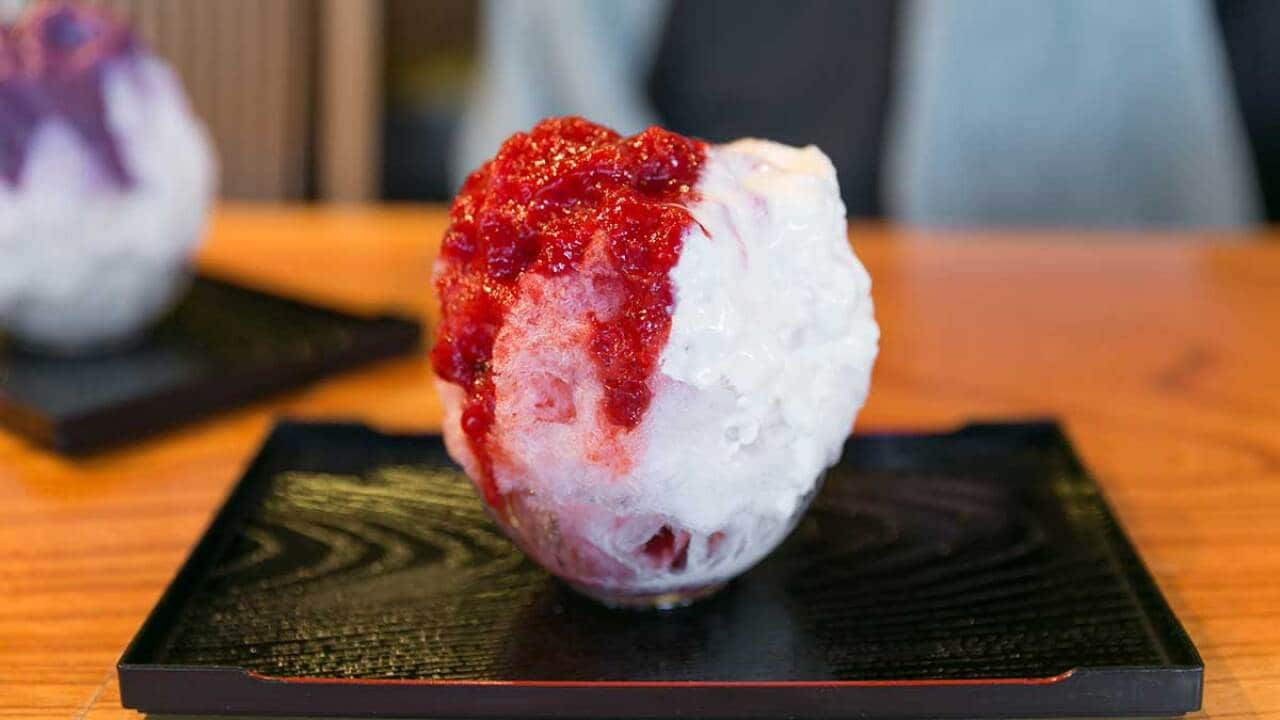Japan has a food fad: .  Its artful display is the latest craze on Japanese tables, and yoghurt is one of the trendiest foods in the country.
Its artful display is the latest craze on Japanese tables, and yoghurt is one of the trendiest foods in the country.
Today, millions of Japanese include yoghurt in their daily diet, and the market . And , a Japanese company that has a subsidiary specialising in dairy products, is the biggest domestic producer in an industry valued at 410 billion yen ($A4.9 billion) annually, according to a March 6 article in the online newspaper .
How did yoghurt go from being a food alien to the Japanese, a substance often considered distasteful or even inedible just 35 years ago, to being a daily necessity and a symbol of health and well-being?

Meiji Dairy has built a dominant presence in the Japanese yoghurt market. Source: Getty Images / Yoshikazu Tsuno
A new superfood
That was the question underlying the fieldwork I conducted from 2007 to 2012, for which I examined both dairy companies and consumers (available and ). I traced this commodity through time and space – from Bulgaria to Japan – watching it transform.
I asked people: what do you think you’re actually eating when you consume yoghurt? Is it a specific bacterium, a cool trend or a health-boosting substance?
Turns out, yoghurt’s current standing in Japan as a scientifically proven, evidence-based health food was created by a sophisticated marketing campaign.
Meiji’s yoghurt commercials extol the Bulgarian origins of their product, presenting the eastern European nation as the sacred birthplace of yoghurt. In Bulgaria, they tell consumers, dairy production is an old tradition, and “the wind is different, the water is different, the light is different”.
Bulgaria is promoted as the sacred birthplace of Japanese yoghurt:
What triggered the Japanese Meiji Bulgaria Yogurt company, which now boasts , to invest in this product?
The quest for longevity
Meiji started considering how to develop Bulgarian-style yoghurt for the Japanese market in the late 1960s.
At the time, the only type of yoghurt available in Japan was a sweetened, heat-treated fermented milk with a jelly-like texture. Brands such as Meiji honey yoghurt, Snow brand yoghurt and Morinaga yoghurt were distributed in small 80-gram jars and consumed as a snack or dessert, according to Meiji’s company history.
Plain yoghurt with living Lactobacillus bulgaricus, like what is popularly consumed in Bulgaria, did not exist. One member of Meiji’s Bulgaria yoghurt project told me he still remembered the shock of trying the plain yoghurt presented at the Bulgarian pavilion at the . It was weird, he said, and astonishingly sour.
But plain yoghurt had a powerful draw: the promise of increased longevity. At the dawn of the 20th century, Nobel Prize-winning Russian scientist Elie Metchnikoff (1845-1916) that ageing was caused by toxic bacteria in the gut. He pinpointed lactic acid bacteria for its ability to neutralise these toxins and thus slow the ageing process.
Metchnikoff touted the unparalleled effectiveness of Lactobacillus bulgaricus, isolated from homemade Bulgarian yoghurt, for this task and recommended eating it every day.
That myth remains today. During my fieldwork in Bulgaria, I heard the same story many times: how powerful the local bacterium was; how it made delicious and healthy yoghurt.
One elderly woman attributed her daughter’s recovery from breast cancer to homemade goat-milk yoghurt.
“It is the bacillus that makes our milk, my girl,” she concluded. “It is unique. When I was young I didn’t eat much yoghurt, but now that I take it every day, my blood pressure has been normal and I feel so energetic!”
From inedible to irreplaceable
Meiji realised that, technologically speaking, it would not be difficult to produce plain yoghurt with living Lactobacillus bulgaricus. In 1971, the company launched its innovative product in Japan, simply calling it “plain yoghurt”.
. Some took its sourness to mean that the product had gone bad while others doubted its edibility.
But Meiji persevered. In 1973, after making an agreement with the Bulgarian state-owned dairy enterprise to import yoghurt starter cultures, the company received permission to rename its product Meiji Bulgaria yoghurt.
The idea was to market authenticity, making full use of the Bulgarian rural idyll: pastoral scenery, herds of sheep and cows, bagpipers in traditional garb and healthy elderly people living in harmony with nature.
In the 1980s, the company combined this strategy with further microbiological research and closer cooperation with the Bulgarian side. In 1984, Japanese consumers saw a new Meiji Bulgaria yoghurt with sleeker packaging, helping build its market presence.
Meiji got another boost when it acquired the right to put the government-issued seal on the label of its Bulgarian yoghurt in 1996. Health benefits have been the focus of its yoghurt branding and marketing ever since.

Yoghurt has come a long way: while plain Bulgarian yoghurt is seen to have strong health claims, clever displays also appeal to consumers. Source: Flickr / Bert Kimura
Branding the holy land of yoghurt
Imbuing their Bulgarian brand with new meanings, images and values, Meiji has not only turned a nice profit but also created in Japan a beautiful picture of Bulgaria as “the holy land of yoghurt”.
Back in Bulgaria, is fascinated by the popularity of a Japanese-made Bulgarian yoghurt. In one 2015 article, claimed that Meiji’s Bulgarian yoghurt was more popular than Coca-Cola.
Almost every story about Japan, or , mentions the Bulgarian yoghurt success story. This narrative is even used to invoke national pride.
To many Bulgarians I met, the new Japanese identity of their local yoghurt embodies the very spirit of Bulgarian collective traditions. At the same time, they feel more connected to the modern world by its adoption as a symbol of health and happiness in one of the world’s great economic powers.
across the world, but yoghurt’s transformation has been a miraculous one, becoming a source of health and nourishment for people in Japan and a salve for the Bulgarian national soul.
, Lecturer in Food Culture, . This article was originally published on . Read the . lead image by via Flickr. Yoghurt varieties image by via Flickr.




